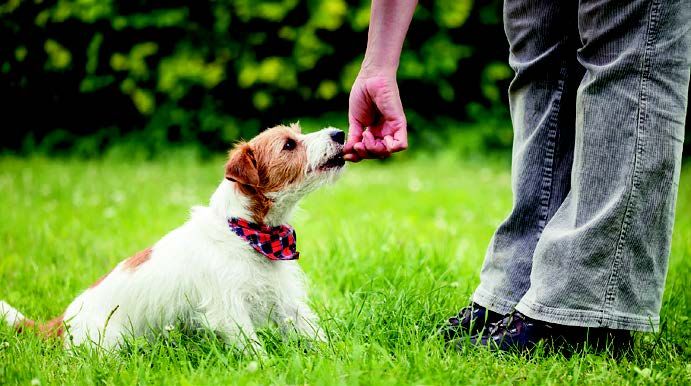The very best trainer for your dog is you. Nothing strengthens the bond between you and your pet like patiently teaching cues — “Sit,” “Stay,” Come,” and so on — and rewarding her not just with food but also with your delight in her ability to follow through. All the give-and-take involved helps foster the emotional connection between the two of you, with a great deal of shared satisfaction.
But “you” may not be available. Perhaps you know you don’t have the patience, are simply too busy, or have just rescued a dog and don’t know enough about how to teach a dog to comply. In that case, hiring a trainer is the way to go. But how do you choose?
With the saying “First do no harm” in mind, you want to make sure a trainer you are considering employs no punishment. So ask the following three questions:
1. Do you believe that while physical punishments, or “corrections,” are not ideal, they must sometimes be employed?
2. Do you give corrections with a collar by jerking a dog’s head?
3. Do you ever use choke, prong, or shock collars?
The answer should always be “No.” If it’s not, move on. Training should never involve pain or fear. Such responses only inhibit a dog’s ability to learn. How well do you think you could learn if you feared physical punishment for getting the answer wrong? Another problem with fear-based training: It can make a dog aggressive.
More tips for deciding on the right trainer
Don’t fall into the trap of asking whether the person is a “positive” trainer. Plenty of trainers call themselves “positive” because they use some positive training but resort to physical punishment as well.
You may, however, want to find out if the person is a member of the Association of Professional Dog Trainers (www.apdt.com). The organization promotes positive, no-punishment training only and in fact may be able to help you locate an exclusively positive trainer in your area.
Different strokes for different dogs
Beyond making sure the trainer uses positive training only, get a feel for her and then rely on your gut. Along with interviewing the trainer, observe her training another dog. Does she seem like she would be a good fit for your pet? Are the tails of the dogs in her care up and wagging or down and tucked? Does the person seem ready to scold?
If your pet is fearful and shy in the first place, you don’t want someone who comes on too strong. On the other hand, if your dog is a rambunctious handful, you might prefer someone who exhibits leadership skills without being mean.
Before you make a final decision, get some references. If the trainer balks when you ask for names and numbers of people to talk to, take it as a red flag. Someone who stands by her work shouldn’t get defensive about your talking to her other clients.
Another red flag: a trainer who tells you what to feed your dog or gives medical advice or instructions. Trainers train; they are not healthcare professionals.
Finally, if you choose someone and then two or three sessions in feel you made the wrong choice, stop. The goal is not to make the trainer comfortable; it’s to help your dog learn to cooperate with confidence so she can feel comfortable in her environment.





